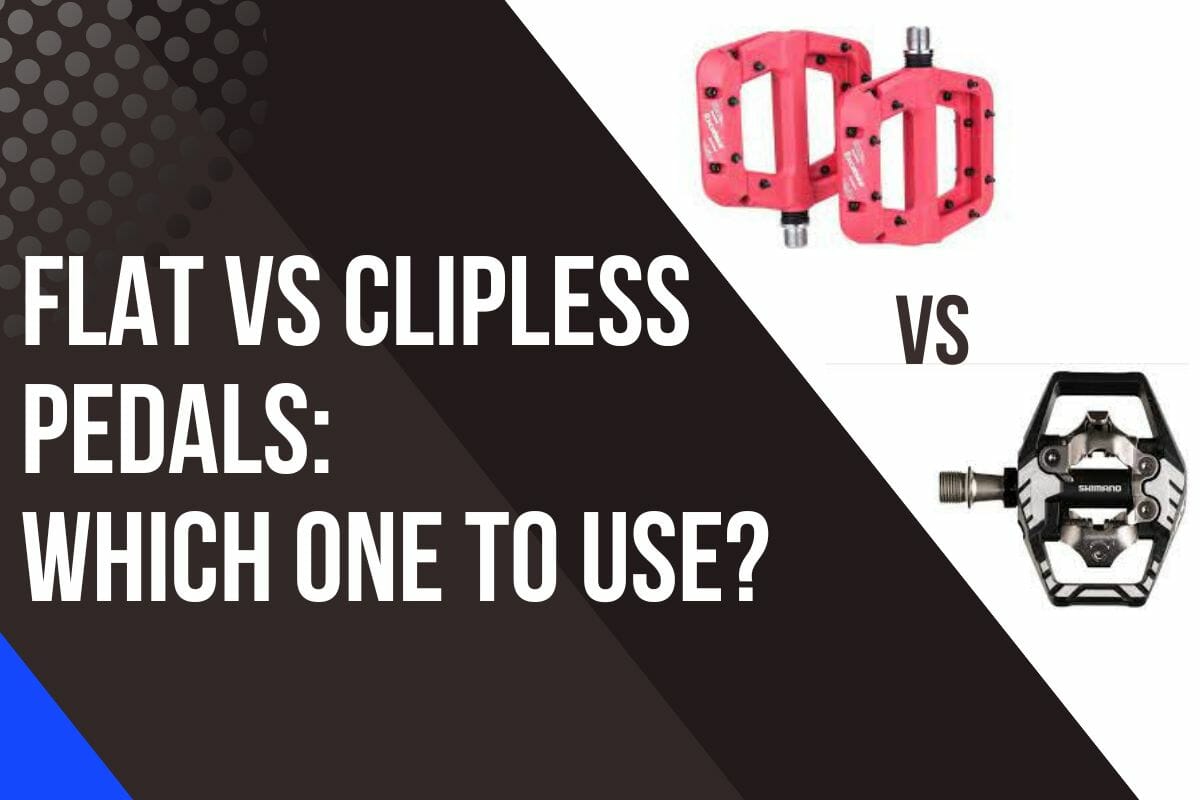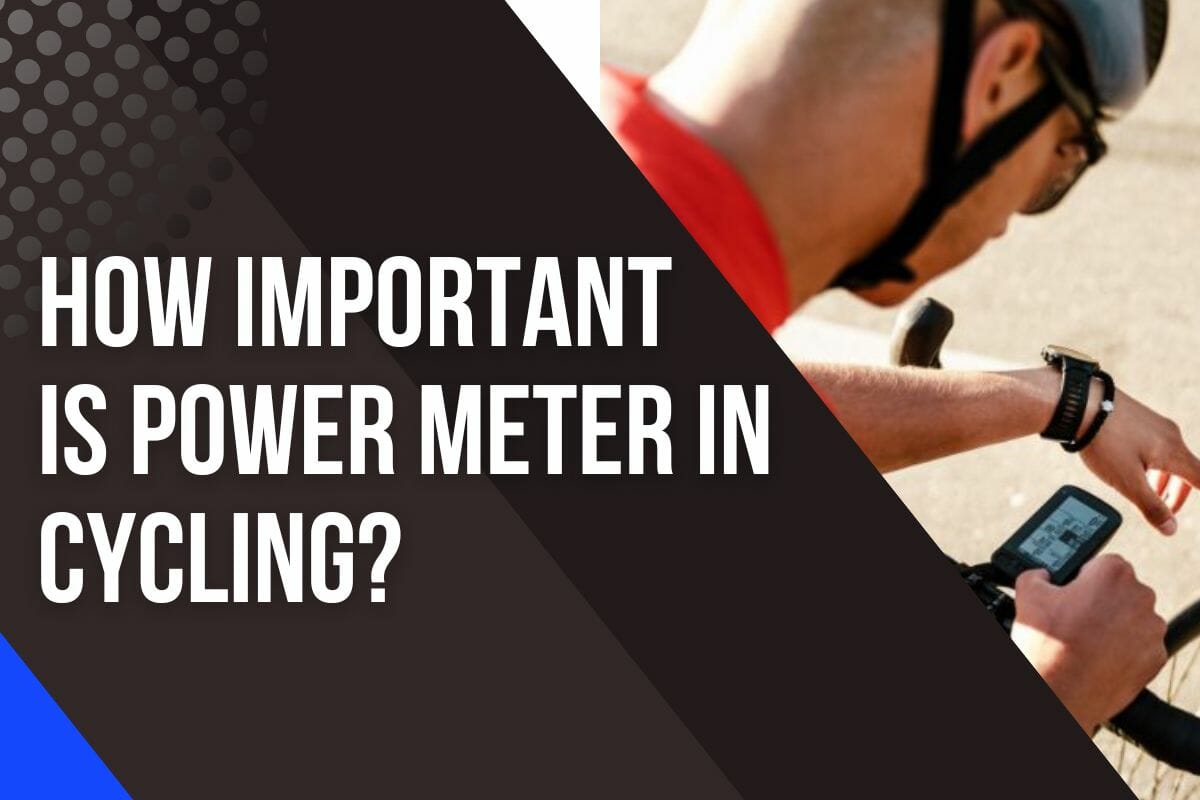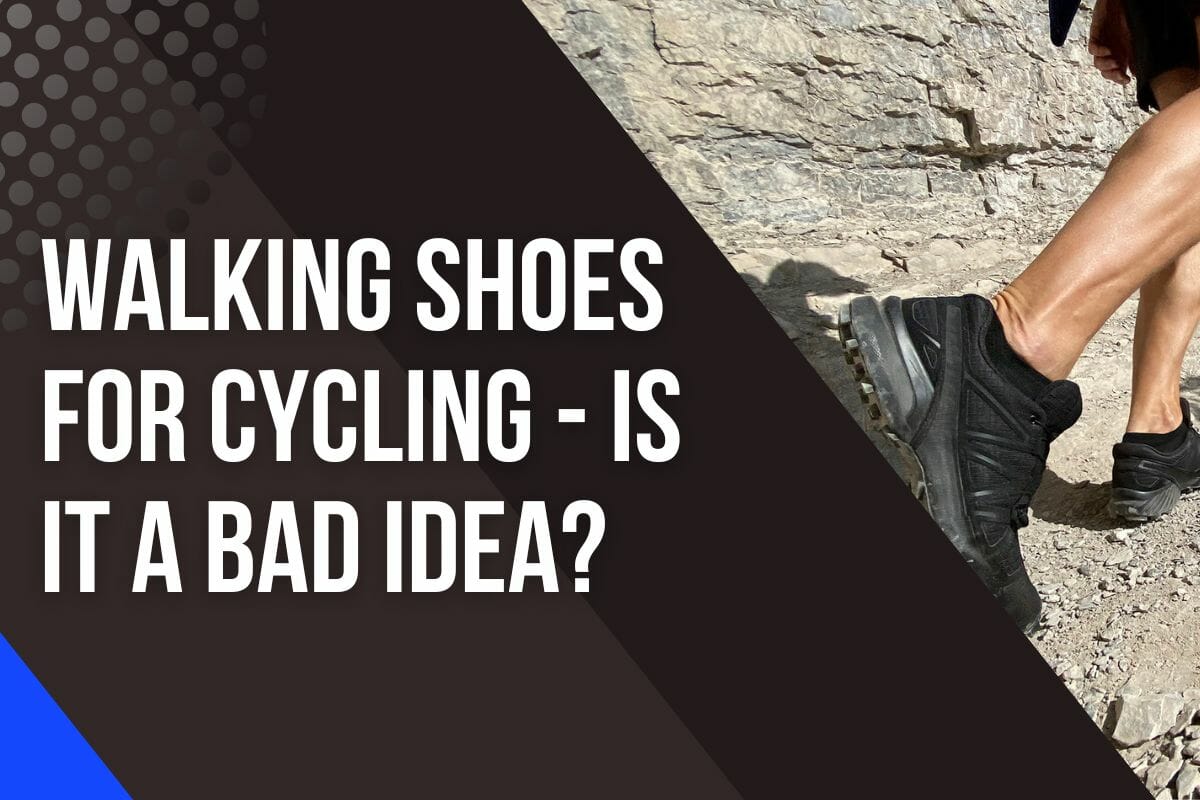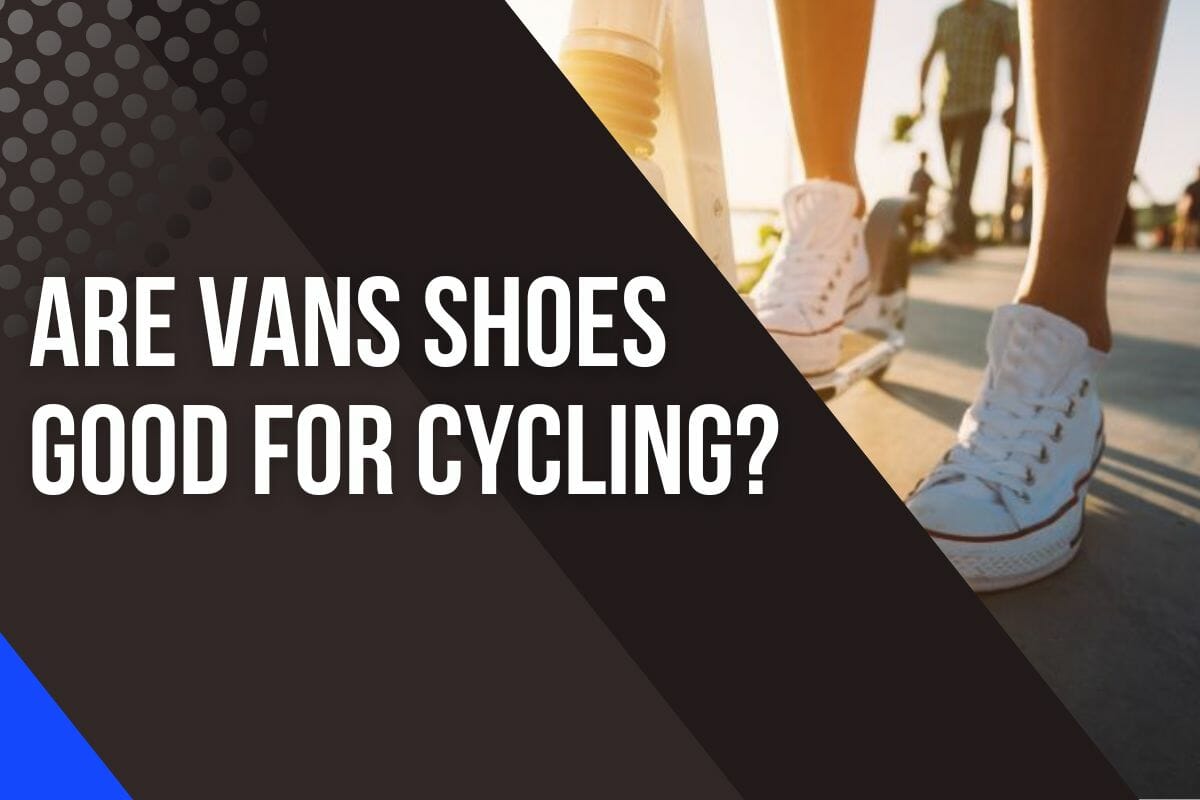Why Are Cycling Shoes So Narrow? Expert Explanation
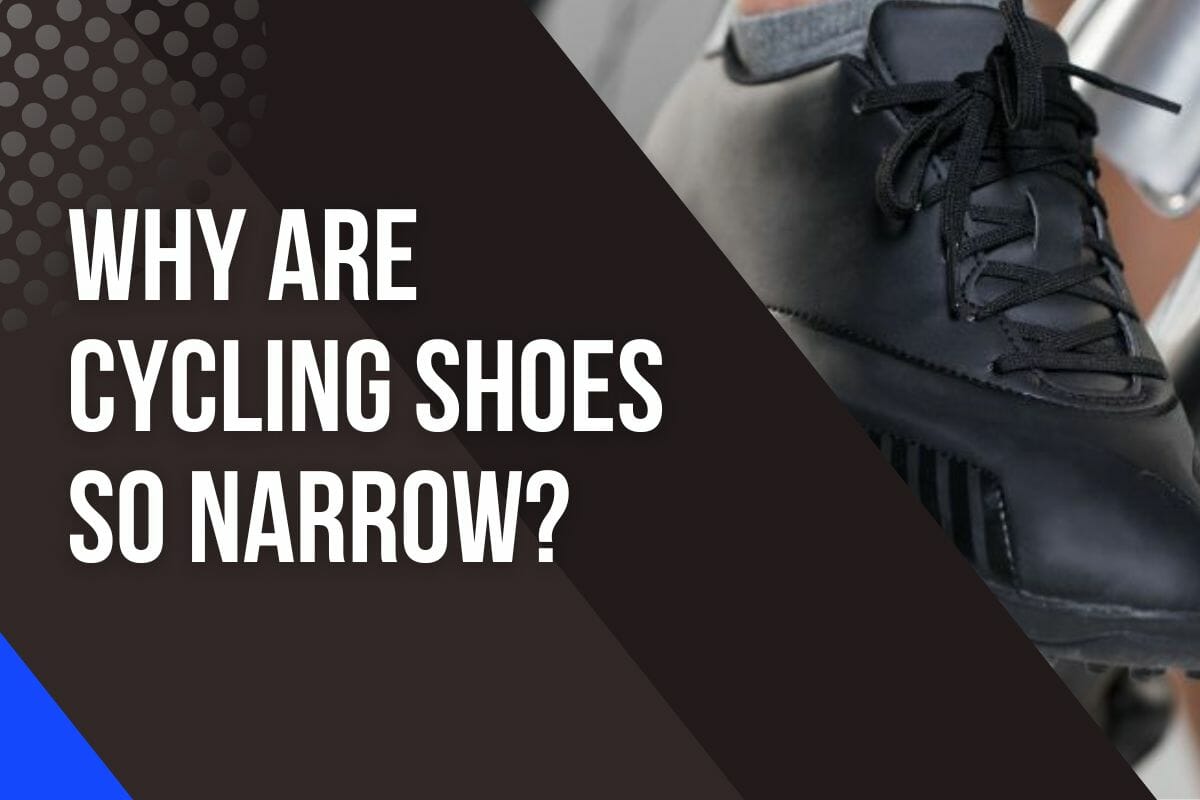
The shape and size of a cyclist’s shoe can have a huge impact on their experience.
So why is it that most cycling shoes tend to be narrower than regular trainers or running shoes?
The reason most cycling shoes are narrow is simple: if they weren’t, your feet would be bouncing around inside the shoe, wasting energy that could be used to push down on the pedals. This would make cycling far less efficient. Keeping your feet snug in the shoe helps make sure you get the most power out of every pedal stroke.
Below, I’ll explore more reasons behind this design decision, looking at how different types of cyclists might benefit from using narrow-fitting footwear.
We’ll also consider whether there are any negative impacts associated with wearing tight-fitting bike shoes, and what other options exist for those who want something wider.
Anatomy Of A Cycling Shoe
Cycling shoes are like a puzzle piece, fitting together perfectly with the pedal.
Narrow cycling shoes provide an optimized fit for riders of all skill levels, enabling them to go faster and farther than ever before.

The shape of the shoe affects how it transfers power from the foot through the pedals.
A narrower design gives cyclists greater control when shifting gears or accelerating out of corners, as well as more efficient energy transfer while pedaling up hills or sprinting on flats.
It also helps reduce fatigue by reducing pressure points against key areas of the foot such as the toes and arch.
All these qualities make narrow cycling shoes ideal for long rides and intense races alike.
Benefits of Narrow Cycling Shoes
Narrow cycling shoes may seem uncomfortable at first, but there are many benefits to wearing them.
Here are 4 reasons why narrow cycling shoes can be advantageous.
1. Narrower Shoes Fit Better
If you have a low-volume foot with thin or narrow feet, regular-width cycling shoes may feel too roomy and sloppy on your feet when pedaling.
With narrower shoes, you get a snugger fit that’s more comfortable for riding and racing even over long distances.
2. Increased Power Transfer From The Pedal Stroke
This is achieved with a snugger fitting shoe as opposed to one with extra space in it.
You’ll notice an immediate difference in terms of efficiency and performance when switching to narrower shoes.
They help keep your feet firmly planted onto the pedals.
So, all your energy goes into propelling forward motion instead of being wasted by unnecessary movement within the shoe itself.

3. Improved Aerodynamics
Streamlined footwear reduces drag while riding which helps increase speed and puts less strain on leg muscles compared to traditional wide-fitting bike shoes that create turbulence and resistance due to their bulky shape. (1)
4. Reduced Risk Of Injury
If your toes are rubbing against the front wall of the toe box then this could lead to serious blisters and hotspots while pedaling that can cause great discomfort during rides or race events!
By selecting narrow cycling shoes specifically designed for different shapes/sizes, you’ll be able to ensure optimal comfort while avoiding potential injuries down the line.
So, whether you’re looking for improved performance, increased speed, greater comfort, or reduced risk of injury, don’t underestimate how much impact proper fitting bicycle footwear can make on your overall experience!
Next, we’ll discuss some disadvantages associated with opting for narrowly sized bike shoes.
Disadvantages Of Narrow Cycling Shoes
The slim, streamlined design of cycling shoes is appealing to many cyclists.
Take the case of Ryan for instance; he got himself a pair of narrow cycling shoes because they looked cool and felt comfortable.

But there are certain drawbacks associated with this type of shoe that needs to be considered before making an informed decision.
One disadvantage of having such tight-fitting footwear is that it can restrict movement in the toes, resulting in discomfort during long rides or intense workouts.
Additionally, some people find them difficult to put on due to their snug fit, which can be time-consuming and frustrating if you’re trying to get ready for your next ride quickly!
Tips For Finding The Right Fit
When it comes to finding the right fit for cycling shoes, there are a few tips I’d like to share. Firstly, you should always try on shoes in person and not buy them online if possible.

That way, you can get a feel for how they fit your feet before buying. Here are four things to keep in mind when shopping:
- Get sized professionally – Cycling shoe sizes differ from regular shoe sizes so getting your foot measured by an expert is key to ensuring maximum comfort while riding.
- Look out for features such as arch support or adjustable straps – Since the main purpose of cycling shoes is to provide power transfer (as opposed to walking shoes), some come with additional features that will help reduce fatigue during long rides.
- Don’t be afraid to go up one size – It’s important that your toes have enough room inside the toe box so don’t be afraid to go up one size compared to what you normally wear if needed!
- Wear the same socks you plan on using for cycling – Again this ties back into making sure you get a perfect fit since different thicknesses of socks can change the way a shoe fits your foot significantly!
Once you’ve taken all these factors into account, make sure that wherever you’re trying on the shoes has a good return policy just in case they turn out not being quite right after all!
Consider visiting multiple stores until you find something that works best for your needs and budget.
Because ultimately having comfortable cycling shoes makes all the difference in enjoying those long rides!
My Verdict
Cycling shoes are designed to be narrow for a reason.
They provide more power transfer when pedaling and help athletes achieve optimum performance.
Narrow shoes also reduce the risk of foot pain and discomfort during long rides, making them an essential tool in any cyclist’s gear arsenal.
While it may seem daunting at first to find the perfect fit, with time and effort you can find a pair that fits like a glove – literally!
It is important to remember that not all cyclists require narrow cycling shoes; some will do just fine with regular ones.
However, if you want to take your cycling experience to the next level, investing in a good pair of narrow cycling shoes could make all the difference.
